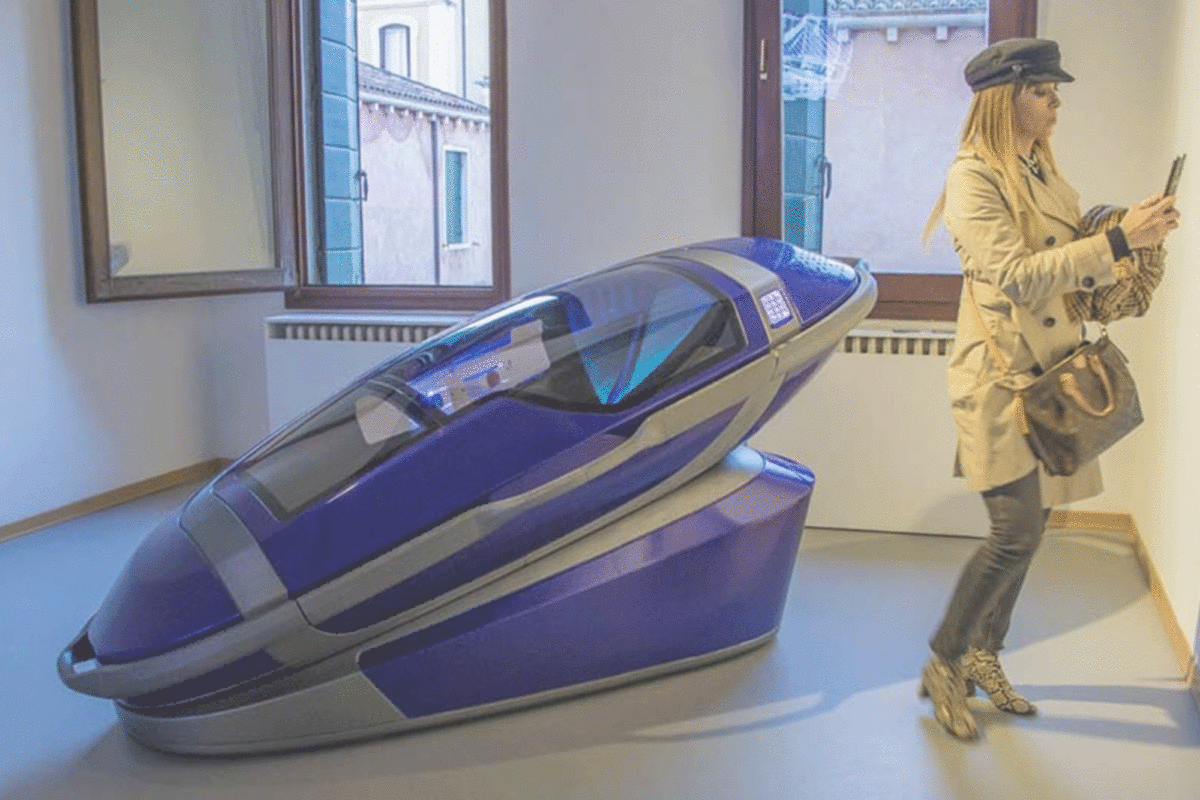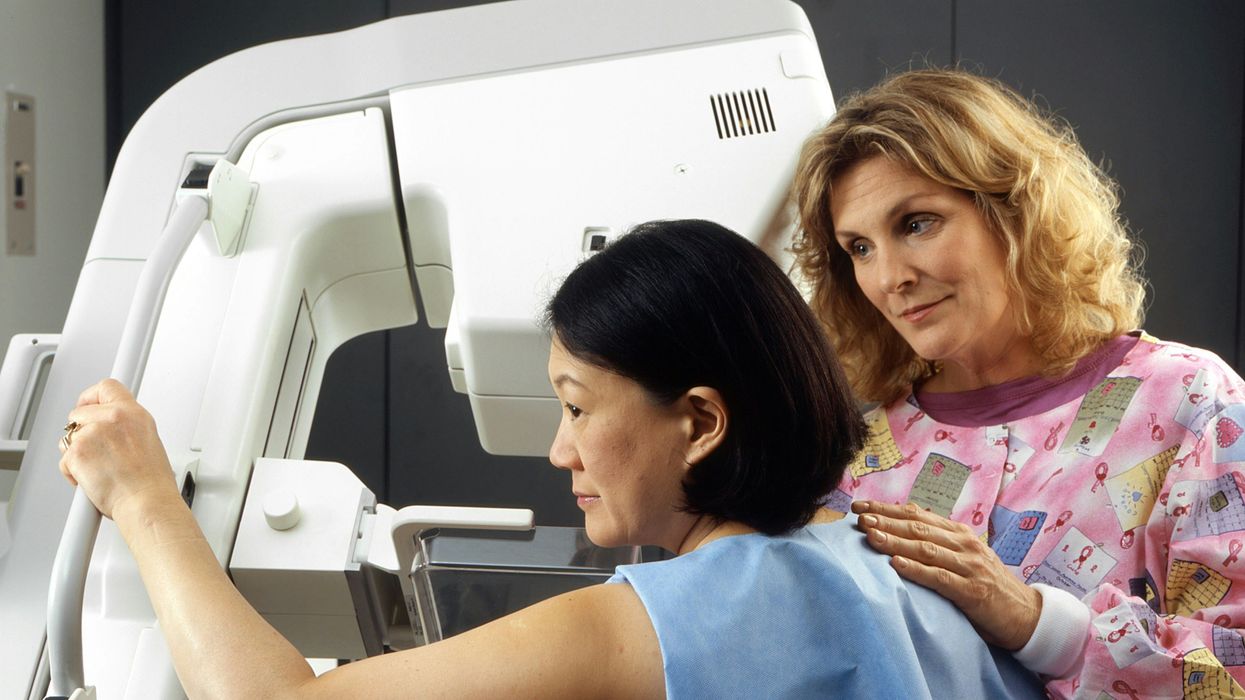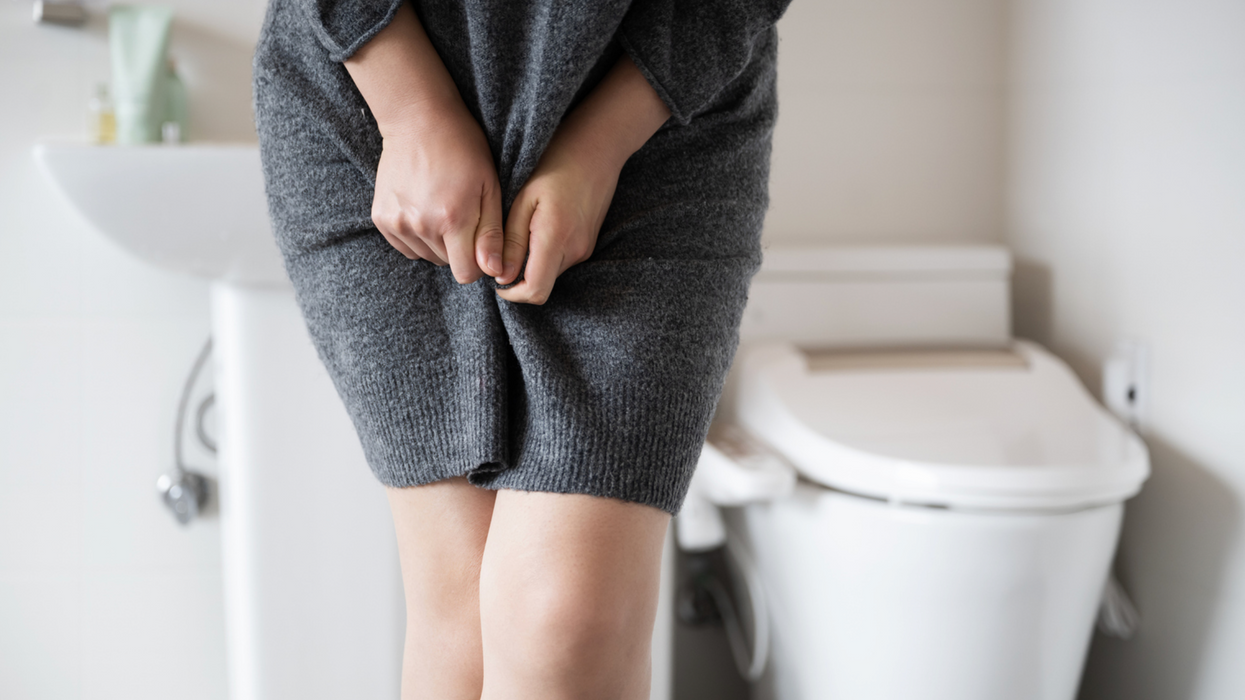A Futuristic Suicide Machine Aims to End the Stigma of Assisted Dying

A prototype of the Sarco is currently on display at Venice Design.
Bob Dent ended his life in Perth, Australia in 1996 after multiple surgeries to treat terminal prostate cancer had left him mostly bedridden and in agony.
Although Dent and his immediate family believed it was the right thing to do, the physician who assisted in his suicide – and had pushed for Australia's Northern Territory to legalize the practice the prior year – was deeply shaken.
"You climb in, you are going somewhere, you are leaving, and you are saying goodbye."
"When you get to know someone pretty well, and they set a date to have lunch with you and then have them die at 2 p.m., it's hard to forget," recalls Philip Nitschke.
Nitschke remembers being highly anxious that the device he designed – which released a fatal dose of Nembutal into a patient's bloodstream after they answered a series of questions on a laptop computer to confirm consent – wouldn't work. He was so alarmed by the prospect he recalls his shirt being soaked through with perspiration.
Known as a "Deliverance Machine," it was comprised of the computer, attached by a sheet of wiring to an attache case containing an apparatus for delivering the Nembutal. Although gray, squat and grimly businesslike, it was vastly more sophisticated than Jack Kevorkian's Thanatron – a tangle of tubes, hooks and vials redolent of frontier dentistry.
The Deliverance Machine did work – for Dent and three other patients of Nitschke. However, it remained far from reassuring. "It's not a very comfortable feeling, having a little suitcase and going around to people," he says. "I felt a little like an executioner."
The furor caused in part by Nitschke's work led to Australia's federal government banning physician-assisted suicide in 1997. Nitschke went on to co-found Exit International, one of the foremost assisted suicide advocacy groups, and relocated to the Netherlands.
Exit International recently introduced its most ambitious initiative to date. It's called the Sarco — essentially the Eames lounger of suicide machines. A prototype is currently on display at Venice Design, an adjunct to the Biennale.
Sheathed in a soothing blue coating, the Sarco prototype contains a window and pivots on a pedestal to allow viewing by friends and family. Its close quarters means the opening of a small canister of liquid nitrogen would cause quick and painless asphyxiation. Patrons with second thoughts can press a button to cancel the process.
"The sleek and colorful death-pod looks like it is about to whisk you away to a new territory, or that it just landed after being launched from a Star Trek federation ship," says Charles C. Camosy, associate professor of theological and social ethics at Fordham University in New York City, in an email. Camosy, who has profound misgivings about such a device, was not being complimentary.
Nitschke's goal is to de-medicalize assisted suicide, as liquid nitrogen is readily available. But he suggests employing a futuristic design will also move debate on the issue forward.
"You pick the time...have the party and people come around. You climb in, you are going somewhere, you are leaving, and you are saying goodbye," he says. "It lends itself to a sense of occasion."
Assisted suicide is spreading in developed countries, but very slowly. It was legalized again in Australia just last June, but only in one of its six states. It is legal throughout Canada and in nine U.S. states.
Although the process is outlawed throughout much of Europe, nations permitting it have taken a liberal approach. Euthanasia — where death may be instigated by an assenting physician at a patient's request — is legal in both Belgium and the Netherlands. A terminal illness is not required; a severe disability or a condition causing profound misery may suffice.
Only Switzerland permits suicide with non-physician assistance regardless of an individual's medical condition. David Goodall, a 104-year Australian scientist, traveled 8,000 miles to Basel last year to die with Exit International's assistance. Goodall was in good health for his age and his mind was needle sharp; at a news conference the day before he passed, he thoughtfully answered questions and sang Beethoven's "Ode to Joy" from memory. He simply believed he had lived long enough and wanted to avoid a diminishing quality of life.
"Dying is not a medical process, and if you've decided to do this through rational [decision-making], you should not have to get permission from the medical profession," Nitschke says.
However, the deathstyle aspirations of the Sarco bely the fact obtaining one will not be as simple as swiping a credit card. To create a legal firewall, anyone wishing to obtain a Sarco would have to purchase the plans, print the device themselves — it requires a high-end industrial printer to do so — then assemble it. As with the Deliverance device, the end user must be able to answer computer-generated questions designed by a Swiss psychiatrist to determine if they are making a rational decision. The process concludes with the transmission of a four-digit code to make the Sarco operational.
As with many cutting-edge designs, the path to a working prototype has been nettlesome. Plans for a printed window have been abandoned. How it will be obtained by end users remains unclear. There have also been complications in creating an AI-based algorithm underlying the user questions to reliably determine if the individual is of sound mind.
While Nitschke believes the Sarco will be deployed in Switzerland for the first time sometime next year, it will almost certainly be a subject of immense controversy. The Hastings Center, one of the world's major bioethics organizations and a leader on end-of-life decision-making, flatly refused to comment on the Sarco.
Camosy strongly condemns it. He notes since U.S. life expectancy is actually shortening — with despair-driven suicide playing a role — efforts must be marshaled to mitigate the trend. To him, the Sarco sends an utterly wrong message.
"It is diabolical that we would create machines to make it easier for people to kill themselves."
"Most people who request help in killing themselves don't do so because they are in intense, unbearable pain," he observes. "They do it because the culture in which they live has made them feel like a burden. This culture has told them they only have value if they are able to be 'productive' and 'contribute to society.'" He adds that the large majority of disability activists have been against assisted suicide and euthanasia because it is imperative to their movement that a stigma remain in place.
"It is diabolical that we would create machines to make it easier for people to kill themselves," Camosy concludes. "And anyone with even a single progressive bone in their body should resist this disturbingly morbid profit-making venture with everything they have."
A woman receives a mammogram, which can detect the presence of tumors in a patient's breast.
When a patient is diagnosed with early-stage breast cancer, having surgery to remove the tumor is considered the standard of care. But what happens when a patient can’t have surgery?
Whether it’s due to high blood pressure, advanced age, heart issues, or other reasons, some breast cancer patients don’t qualify for a lumpectomy—one of the most common treatment options for early-stage breast cancer. A lumpectomy surgically removes the tumor while keeping the patient’s breast intact, while a mastectomy removes the entire breast and nearby lymph nodes.
Fortunately, a new technique called cryoablation is now available for breast cancer patients who either aren’t candidates for surgery or don’t feel comfortable undergoing a surgical procedure. With cryoablation, doctors use an ultrasound or CT scan to locate any tumors inside the patient’s breast. They then insert small, needle-like probes into the patient's breast which create an “ice ball” that surrounds the tumor and kills the cancer cells.
Cryoablation has been used for decades to treat cancers of the kidneys and liver—but only in the past few years have doctors been able to use the procedure to treat breast cancer patients. And while clinical trials have shown that cryoablation works for tumors smaller than 1.5 centimeters, a recent clinical trial at Memorial Sloan Kettering Cancer Center in New York has shown that it can work for larger tumors, too.
In this study, doctors performed cryoablation on patients whose tumors were, on average, 2.5 centimeters. The cryoablation procedure lasted for about 30 minutes, and patients were able to go home on the same day following treatment. Doctors then followed up with the patients after 16 months. In the follow-up, doctors found the recurrence rate for tumors after using cryoablation was only 10 percent.
For patients who don’t qualify for surgery, radiation and hormonal therapy is typically used to treat tumors. However, said Yolanda Brice, M.D., an interventional radiologist at Memorial Sloan Kettering Cancer Center, “when treated with only radiation and hormonal therapy, the tumors will eventually return.” Cryotherapy, Brice said, could be a more effective way to treat cancer for patients who can’t have surgery.
“The fact that we only saw a 10 percent recurrence rate in our study is incredibly promising,” she said.
Urinary tract infections account for more than 8 million trips to the doctor each year.
Few things are more painful than a urinary tract infection (UTI). Common in men and women, these infections account for more than 8 million trips to the doctor each year and can cause an array of uncomfortable symptoms, from a burning feeling during urination to fever, vomiting, and chills. For an unlucky few, UTIs can be chronic—meaning that, despite treatment, they just keep coming back.
But new research, presented at the European Association of Urology (EAU) Congress in Paris this week, brings some hope to people who suffer from UTIs.
Clinicians from the Royal Berkshire Hospital presented the results of a long-term, nine-year clinical trial where 89 men and women who suffered from recurrent UTIs were given an oral vaccine called MV140, designed to prevent the infections. Every day for three months, the participants were given two sprays of the vaccine (flavored to taste like pineapple) and then followed over the course of nine years. Clinicians analyzed medical records and asked the study participants about symptoms to check whether any experienced UTIs or had any adverse reactions from taking the vaccine.
The results showed that across nine years, 48 of the participants (about 54%) remained completely infection-free. On average, the study participants remained infection free for 54.7 months—four and a half years.
“While we need to be pragmatic, this vaccine is a potential breakthrough in preventing UTIs and could offer a safe and effective alternative to conventional treatments,” said Gernot Bonita, Professor of Urology at the Alta Bro Medical Centre for Urology in Switzerland, who is also the EAU Chairman of Guidelines on Urological Infections.
The news comes as a relief not only for people who suffer chronic UTIs, but also to doctors who have seen an uptick in antibiotic-resistant UTIs in the past several years. Because UTIs usually require antibiotics, patients run the risk of developing a resistance to the antibiotics, making infections more difficult to treat. A preventative vaccine could mean less infections, less antibiotics, and less drug resistance overall.
“Many of our participants told us that having the vaccine restored their quality of life,” said Dr. Bob Yang, Consultant Urologist at the Royal Berkshire NHS Foundation Trust, who helped lead the research. “While we’re yet to look at the effect of this vaccine in different patient groups, this follow-up data suggests it could be a game-changer for UTI prevention if it’s offered widely, reducing the need for antibiotic treatments.”

